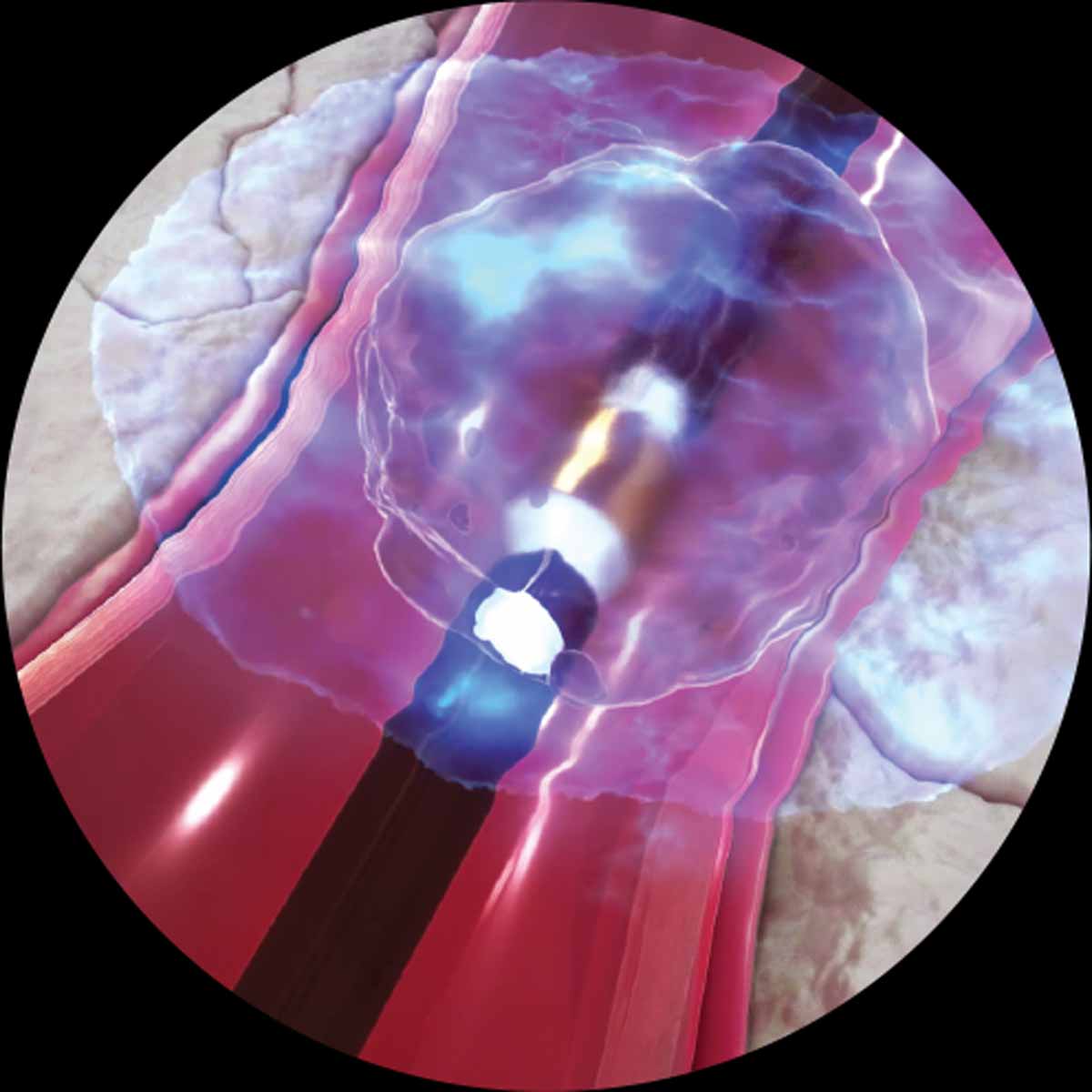- Home
- Editorial
- News
- Practice Guidelines
- Anesthesiology Guidelines
- Cancer Guidelines
- Cardiac Sciences Guidelines
- Critical Care Guidelines
- Dentistry Guidelines
- Dermatology Guidelines
- Diabetes and Endo Guidelines
- Diagnostics Guidelines
- ENT Guidelines
- Featured Practice Guidelines
- Gastroenterology Guidelines
- Geriatrics Guidelines
- Medicine Guidelines
- Nephrology Guidelines
- Neurosciences Guidelines
- Obs and Gynae Guidelines
- Ophthalmology Guidelines
- Orthopaedics Guidelines
- Paediatrics Guidelines
- Psychiatry Guidelines
- Pulmonology Guidelines
- Radiology Guidelines
- Surgery Guidelines
- Urology Guidelines
Intravascular lithotripsy before PCI in severe CAC patients effective and safe: Circulation Study

Delhi: Intravascular lithotripsy (IVL) can be used to blast calcifications with a burst of acoustic energy in patients with severe coronary artery calcification (CAC) who require revascularization, finds a recent study in the Circulation: Cardiovascular Interventions journal. According to the study, IVL was safely performed before stent implantation with high procedural success and minimal complications in such patients.
Coronary artery calcification can hinder percutaneous coronary intervention (PCI). High-pressure noncompliant balloon dilation, speciality balloons, and atherectomy are techniques commonly used to facilitate PCI in severe CAC; however, all suffer from significant limitations.
IVL is a novel technique based on the principles of kidney stone treatment which uses shock waves to break up stones, adapted for calcific plaque fracture in the cardiovascular system.
Procedural steps to perform IVL:
- The IVL Catheter is delivered across a calcified lesion over an 0.014" wire and the integrated balloon is expanded to 4atm to facilitate efficient energy transfer.
- An electrical discharge from the emitters vaporizes the fluid within the balloon, creating a rapidly expanding & collapsing bubble that generates sonic pressure waves.
- The waves create a localized field effect that travels through soft vascular tissue, selectively cracking intimal and medial calcium within the vessel wall.
- After calcium modification, the integrated balloon may subsequently be used to dilate the lesion at low pressure in order to maximize luminal gain.
Ziad A. Ali, NewYork-Presbyterian Hospital, Columbia University, and colleagues evaluated the safety and effectiveness of IVL for vessel preparation of severe CAC in stenotic de novo coronary lesions before stent implantation and utilized optical coherence tomography (OCT) to examine its mechanism of action and effectiveness in the Disrupt CAD II study.
Disrupt-CAD 2 enrolled 120 patients with severely calcified coronary lesions, 62% in the left anterior descending artery and 25% in the right coronary artery, who underwent IVL in 2018 and 2019.
The primary endpoint was in-hospital major adverse cardiac events (cardiac death, myocardial infarction, or target vessel revascularization). An optical coherence tomography substudy was performed to evaluate the mechanism of action of IVL.
Severe CAC was present in 94.2% of lesions. Successful delivery and use of the IVL catheter was achieved in all patients.
Key findings include:
- The post-IVL angiographic acute luminal gain was 0.83±0.47 mm, and residual stenosis was 32.7±10.4%, which further decreased to 7.8±7.1% after drug-eluting stent implantation.
- The primary endpoint occurred in 5.8% of patients, consisting of 7 non–Q-wave myocardial infarctions.
- There was no procedural abrupt closure, slow or no-reflow, or perforations.
- In 47 patients with post-percutaneous coronary intervention optical coherence tomography, calcium fracture was identified in 78.7% of lesions with 3.4±2.6 fractures per lesion, measuring 5.5±5.0 mm in length.
"In patients with severe CAC who require revascularization, IVL before stent implantation was performed safely with a low rate of complications and with high procedural success," concluded the authors.
Key takeaways from the study:
- Intravascular lithotripsy was safe, with no reported major dissections (types D–F), perforations, abrupt closure, or slow flow/no-reflow.
- In these patients with highly complex coronary lesions, both in-hospital (5.8%) and 30-day (7.6%) major adverse cardiac events were low.
- Optical coherence tomography demonstrated the mechanism of action of intravascular lithotripsy to be intraplaque calcium fracture in ≈80% of patients.

Disclaimer: This site is primarily intended for healthcare professionals. Any content/information on this website does not replace the advice of medical and/or health professionals and should not be construed as medical/diagnostic advice/endorsement or prescription. Use of this site is subject to our terms of use, privacy policy, advertisement policy. © 2020 Minerva Medical Treatment Pvt Ltd